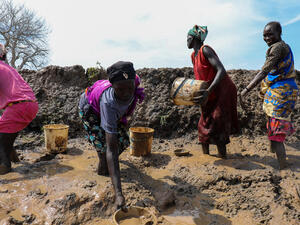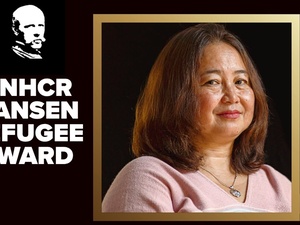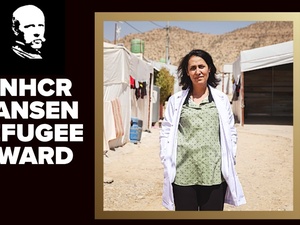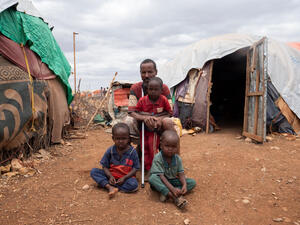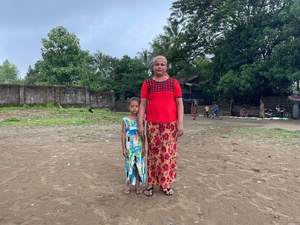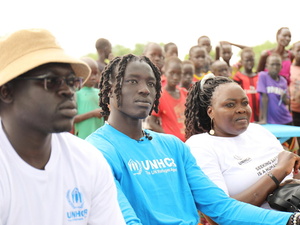Up to 45,000 Congolese flee IDP camp and flow into Goma
Up to 45,000 Congolese flee IDP camp and flow into Goma
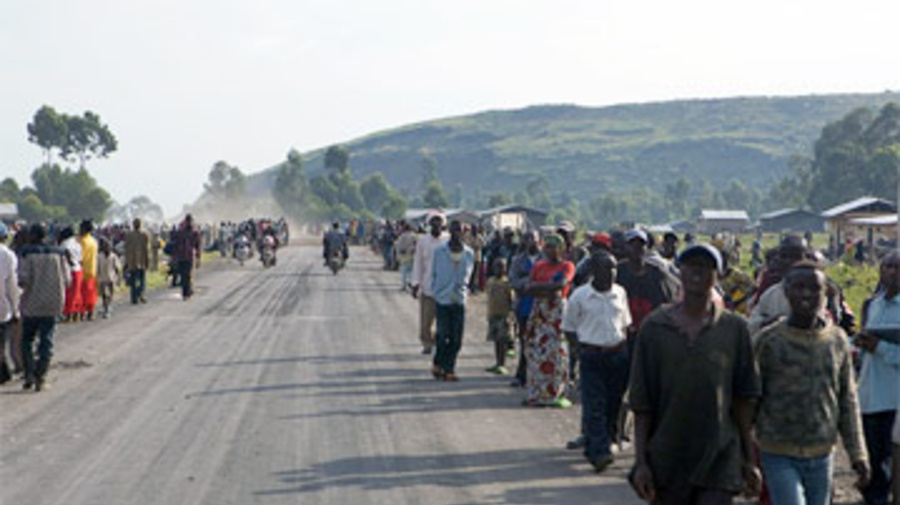
Headlong flight: Tens of thousands of displaced Congolese have fled to the North Kivu provincial capital, Goma.
GOMA, Democratic Republic of the Congo, October 29 (UNHCR) - Tens of thousands of frightened Congolese citizens fled sites for displaced people in eastern Democratic Republic of the Congo on Wednesday and streamed into a nearby provincial capital.
Up to 45,000 internally displaced people (IDPs) left two sites in Kibati and headed south to the North Kivu capital, Goma, some 10 kilometres away. The IDPs, including 30,000 who had arrived in Kibati a day earlier, fled amid fears that fierce fighting between government troops and rebel fighters loyal to Laurent Nkunda was approaching the city.
A UNHCR team from the Goma office was working in Kibati on Wednesday when the panic began. "When they saw the military coming down from the north in the direction of Goma, people began leaving; everybody was going," a UNHCR staff member said. "People were running in all directions."
Later, many of Goma's streets were jammed with people in what witnesses described as complete chaos.
In a related development, more than 1,000 Congolese villagers have fled to Uganda over the past 24 hours and hundreds more are expected to cross the border soon to escape the escalated fighting.
The refugees said they came from the village of Rugarama, about 17 kilometres from the border. "They have been walking since yesterday because the village was taken over [on Tuesday] by the rebels," said a UNHCR staff member who interviewed the new arrivals. "They are fine, nobody is injured."
The villagers said more than 1,500 more people were on their way to Uganda and were expected to reach the border in the next few hours. The new arrivals will join an estimated 4,000 Congolese refugees who have crossed into south-west Uganda's Kisoro district since August.
The UNHCR staff member, part of a joint assessment mission sent to Busanza on Wednesday, said most of the Congolese arrivals were women and children who wanted to stay by the border.
"These people want to stay at the border because they want to go back as soon as the rebels go," she said, adding that they were staying with family members or with Ugandan hosts and were not in need of immediate assistance.
But the UN refugee agency and other members of the assessment mission, which also gathered the World Food Programme, UNICEF and the Ugandan government, are looking at ways to help the local community and authorities cope with the crisis.
The UN staff member said that the influx was having an affect on food prices, while health centres in the area did not have enough medicine to cope with several thousand more people. The new population was also putting a strain on sanitation facilities. There was also a risk of cholera outbreaks at the border, which is being swept by the rainy season.
While, the new arrivals in Busanza have said they wish to remain put at the border, the UN staff member said that some 500 Congolese had made their own way in the past 10 days to the Nakivale refugee settlement, which is located 350 kms from the border.
Fighting in North Kivu intensified at the end of 2006. By January 2008, it had brought the total number of IDPs in the region to more than 800,000. There are 16 UNHCR-assisted sites in North Kivu sheltering some 100,000 people. Tens of thousands of civilians have found shelter in more than 40 makeshift sites across the province. Aid agencies estimate the total number of IDPs in the province as close to 1 million.
By UNHCR staff in Goma, DRC
Roberta Russo in Busanza, Uganda contributed to this article



